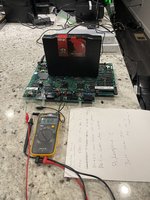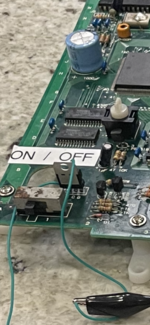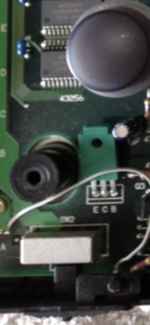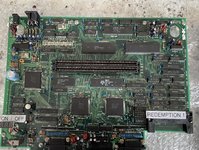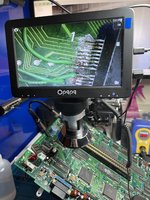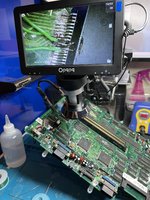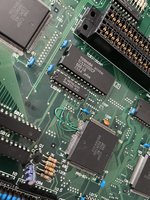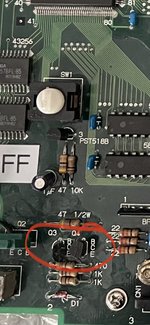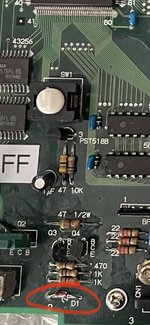Tengugurl
Cheng's Errand Boy

- Joined
- Feb 9, 2017
- Posts
- 111
Hi!
Trying to get a former AES parts console up and running again but running into a few issues
TL;DR - 4.1 v on the 7805 - psu by itself is measuring at 5.25v no load (rated at 5v 3A)
1) bought a 5v 3A psu reversed wires to be center negative
2) hooked up via RGB scart and retrotink 2x scart on flat screen panel (Aka my test bench tv)
3) I added a 24mhz crystal to the rev 1 as I don’t have a daughter board (OEM)
4) replaced the 7805 - few other missing parts
5) Installed a reset button, 43256 ram (fixed some trace damage) and Neo Pro-B0 had some leg damage, was able to solder and trace out lines
I read here:
That I may need to replace the caps as they most likely are dead. (That’s fine but curious if that might be why I can’t get anything to display)
Questions:
1) with no daughter board/24mhz crystal - told I can only do RGB - would RGB scart into a retrotink be okay? Or will I have sync issues as the refresh rate is tough for a flat panel?
A. Does this need to be on my pvm to work or rgb scart modded Consumer tv?
thanks all!
Trying to get a former AES parts console up and running again but running into a few issues
TL;DR - 4.1 v on the 7805 - psu by itself is measuring at 5.25v no load (rated at 5v 3A)
1) bought a 5v 3A psu reversed wires to be center negative
2) hooked up via RGB scart and retrotink 2x scart on flat screen panel (Aka my test bench tv)
3) I added a 24mhz crystal to the rev 1 as I don’t have a daughter board (OEM)
4) replaced the 7805 - few other missing parts
5) Installed a reset button, 43256 ram (fixed some trace damage) and Neo Pro-B0 had some leg damage, was able to solder and trace out lines
I read here:
Neo Geo not enough voltage/current?
In my quest to fix my other Neo Geo (which is now fixed) I bought second faulty system. Turns out I've bagged an original 5v model, low serial number 19k or there about. The system powers on fine, just needed a 5v PSU. I was worried he might have fried it with a higher voltage PSU. But I am...
www.neo-geo.com
That I may need to replace the caps as they most likely are dead. (That’s fine but curious if that might be why I can’t get anything to display)
Questions:
1) with no daughter board/24mhz crystal - told I can only do RGB - would RGB scart into a retrotink be okay? Or will I have sync issues as the refresh rate is tough for a flat panel?
A. Does this need to be on my pvm to work or rgb scart modded Consumer tv?
thanks all!

